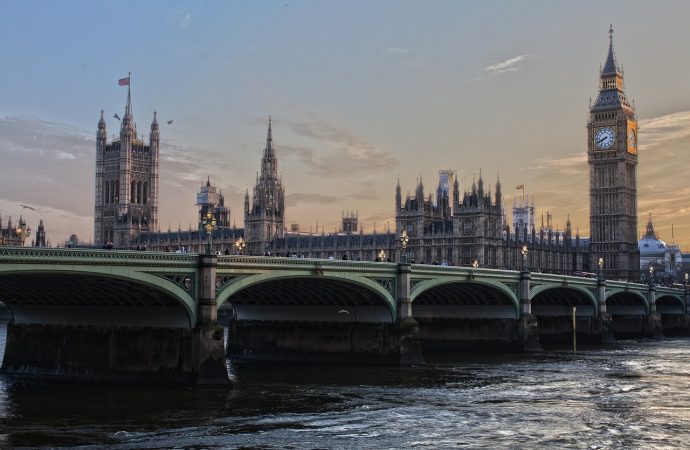Buckle up, folks! The Federal Reserve has been making headlines lately with talks of interest rate hikes and economic recovery. But with so much uncertainty in the world right now, navigating these uncharted waters can be a daunting task. Will they raise rates too soon? Or wait too long? In this blog post, we’ll explore
Buckle up, folks! The Federal Reserve has been making headlines lately with talks of interest rate hikes and economic recovery. But with so much uncertainty in the world right now, navigating these uncharted waters can be a daunting task. Will they raise rates too soon? Or wait too long? In this blog post, we’ll explore how the Fed is approaching this critical decision and what it means for businesses and individuals alike. So sit tight as we embark on an exciting journey into the murky depths of monetary policy!
The Dilemma Facing the Fed
The Federal Reserve is in a tough spot. They must decide whether to keep interest rates low to encourage economic growth, or raise them to prevent inflation. If they keep rates low, it could lead to inflation down the road. But if they raise rates too soon, it could choke off the current economic recovery.
The ideal situation would be for the Fed to slowly and steadily raise rates over time, but that’s not always possible. Sometimes the economy unexpectedly weakens and the Fed has to lower rates again. And sometimes inflation suddenly spikes and the Fed has to raise rates quickly to prevent it from getting out of control.
It’s a complex balancing act, and there’s no easy answer. The Fed will have to carefully consider all of the data before making their decision on where interest rates should go next.
The Current Economic Climate
The current economic climate is one of uncertainty. The Fed has been tight-lipped about its plans for interest rates, and there is speculation that it may be considering another rate hike. This has led to a lot of anxiety among investors, who are worried about the impact a rate hike could have on the stock market.
There are also concerns about the state of the economy. GDP growth has been sluggish, and there are fears that the United States could be heading for a recession. The Fed will need to tread carefully in order to avoid making any mistakes that could further harm the economy.
The Case for Raising Interest Rates
The Federal Reserve recently raised interest rates for the first time in nearly a decade. The decision to begin normalizing monetary policy was undoubtedly difficult, and it is one that has been met with both support and criticism.
Those who support the Fed’s decision argue that keeping rates at historically low levels for an extended period of time was never intended to be a permanent policy measure. They point out that, with the economy now seemingly on solid footing, it is time to begin gradually returning rates to more normal levels.
Critics of the Fed’s decision worry that raising rates too soon could derail the recovery and send the economy back into recession. They argue that there is still too much slack in the labor market and inflation remains below the Fed’s target level.
So far, the economy has responded well to the Fed’s rate hike, but only time will tell if it was the right decision. In any case, it is clear that the Fed faces a challenging road ahead as it tries to navigate uncharted waters.
The Case for Keeping Interest Rates Low
The Federal Reserve has kept interest rates low for several years in order to encourage economic growth. There is a strong case to be made for keeping rates low even as the economy strengthens.
Low interest rates stimulate economic activity by making it cheaper to borrow money. This can lead to increased investment and spending, which can create jobs and drive up wages. Low rates also make it easier for households to service their debt, which can help reduce defaults and foreclosures.
There are risks associated with keeping rates too low for too long, however. Inflation could start to pick up if the economy heats up too much, and asset bubbles could form if investors chase yield by taking on too much risk. But as long as the Fed remains cautious and monitors these risks closely, keeping rates low should continue to support economic growth.
What the Fed Will Likely Do
In the wake of the coronavirus pandemic, the Federal Reserve has been forced to navigate uncharted waters when it comes to setting interest rates. With the economy in a state of flux, it is difficult to predict what the Fed will do next. However, there are a few likely scenarios that could play out.
The first scenario is that the Fed could keep interest rates at their current levels for an extended period of time. This would provide stability and certainty in an uncertain economic environment. It would also be in line with other central banks around the world, which have all taken similar measures in response to the pandemic.
The second scenario is that the Fed could start to slowly raise interest rates as the economy begins to recover. This would help to prevent inflation from taking off and would return rates to more normal levels.
The third scenario is that the Fed could make a more aggressive move and start raising rates sooner than expected. This could be done if inflation starts to pick up or if there are signs that the economy is recovering faster than anticipated.
Which scenario plays out will largely depend on how well the economy recovers from the pandemic. If it rebounds quickly, then we may see rates rise sooner than expected. However, if it takes longer for businesses and consumers to get back on their feet, then we may see rates remain low for an extended period of time.
Conclusion
The Federal Reserve’s decision to lower interest rates is a delicate balancing act of future economic outcomes. While it can help spur growth and inflation, there are also risks associated with too rapid and too dramatic cuts that could create an environment of instability. In this uncharted territory, the Fed will need to carefully consider all factors to make the best decisions for our nation’s economy while avoiding potential pitfalls. By assessing current market conditions and accurately predicting the path towards recovery, we can ensure a strong foundation for our nation’s financial future.





















Leave a Comment
Your email address will not be published. Required fields are marked with *